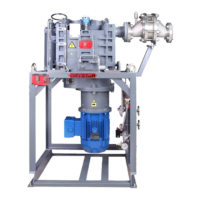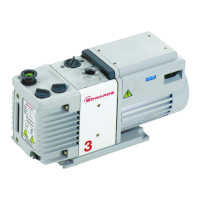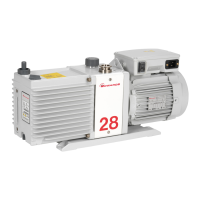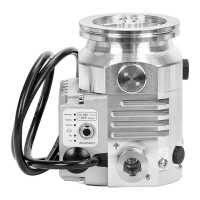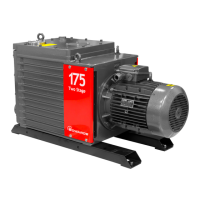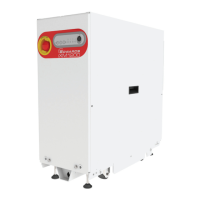A705-74-880 Issue K
Page 26 © Edwards Limited 2009. All rights reserved.
Edwards and the Edwards logo are trademarks of Edwards Limited.
INSTALLATION
3.11 Connect the pump-inlet and pump-outlet
3.11.1 Connect the pump to your process system
When connecting the pump to the process system it is important to take note of the following;
Support process pipelines to stop the transmission of stress to pipeline joints.
To reduce vibration and stress in the system. use a flexible connection in the pipeline from the process
system to the pump.
If there is a possibility that the pump will be exposed to or produce dangerous chemicals. Isolate the pump
from the atmosphere. If necessary, contact Edwards or your supplier for advice on inlet isolation-valves,
outlet check-valves or other components suitable for your application and system design.
To minimise the ingress of dust into the pump in dusty applications, incorporate an inlet filter in the inlet
pipeline. If process particles above 25-micron size are expected, it is recommended that a suitable filter be
incorporated into the inlet installation.
To achieve the best pumping speed, ensure that the pipeline, which connects the process system to the
pump, is as short as possible and has an internal diameter not less than the pump-inlet.
Do not allow debris to get into the pump during installation. Ensure that debris (such as weld slag) cannot get
into the pump during operation.
Use the following procedure to connect the inlet of the GV Pump to your process system. This procedure assumes
that a mechanical booster pump has not been fitted. If a mechanical booster pump has been fitted, use the
instructions given in the appropriate instruction manual supplied with the mechanical booster pump.
1. Refer to Figure 1. Undo and remove the eight M8 x 35 hex-head bolts that secure the blanking-plate to the
pump-inlet (6) and remove the blanking-plate. Retain the bolts.
2. Use the combined trapped O-ring and mesh filter supplied to connect the pump-inlet (6) to your vacuum system;
secure with the bolts retained in Step 1.
Note: If required, you can adapt the blanking-plate removed in Step 1 above to fit your system pipelines: drill a
suitable size hole in the centre of the blanking-plate, then weld the blanking-plate to your pipeline.
Scope of operation of pump excludes flammable process gas in the flammable zone. Take all
necessary safety precautions when you pump toxic, flammable or explosive gases. If not, there will
be a danger of injury.
Ensure that your system can provide adequate gas-ballast and/or inlet purge to dilute toxic,
flammable, explosive gases or oxidants to safe limits. If you do not, there will be a risk of emission
of hazardous gases. The gas ballast feed system in the case of diluting flammable gases to avoid
the flammable zone is safety critical. Refer to Edwards safety booklet P400-40-100.
When the pump is switched off, gas will flow in reverse direction through the pump and there will
be a rapid pressure rise in the inlet pipeline and your process system. If this will cause a dangerous
situation (or adversely affect your process), you must incorporate suitable devices (such as a fast-
acting inlet isolation-valve or an outlet check-valve) in your system pipelines.
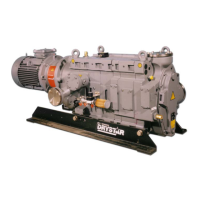
